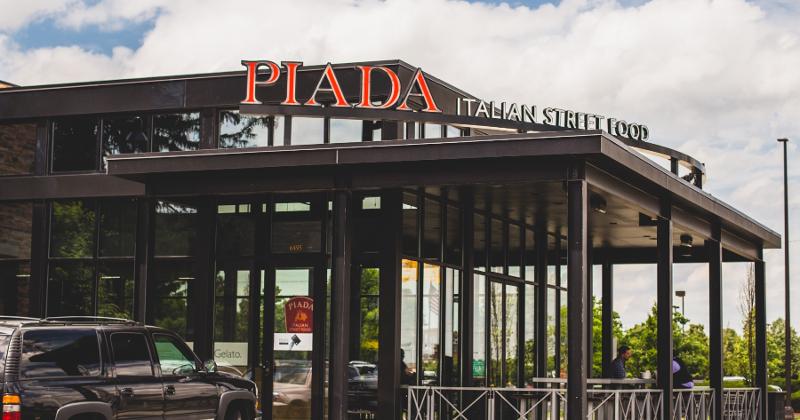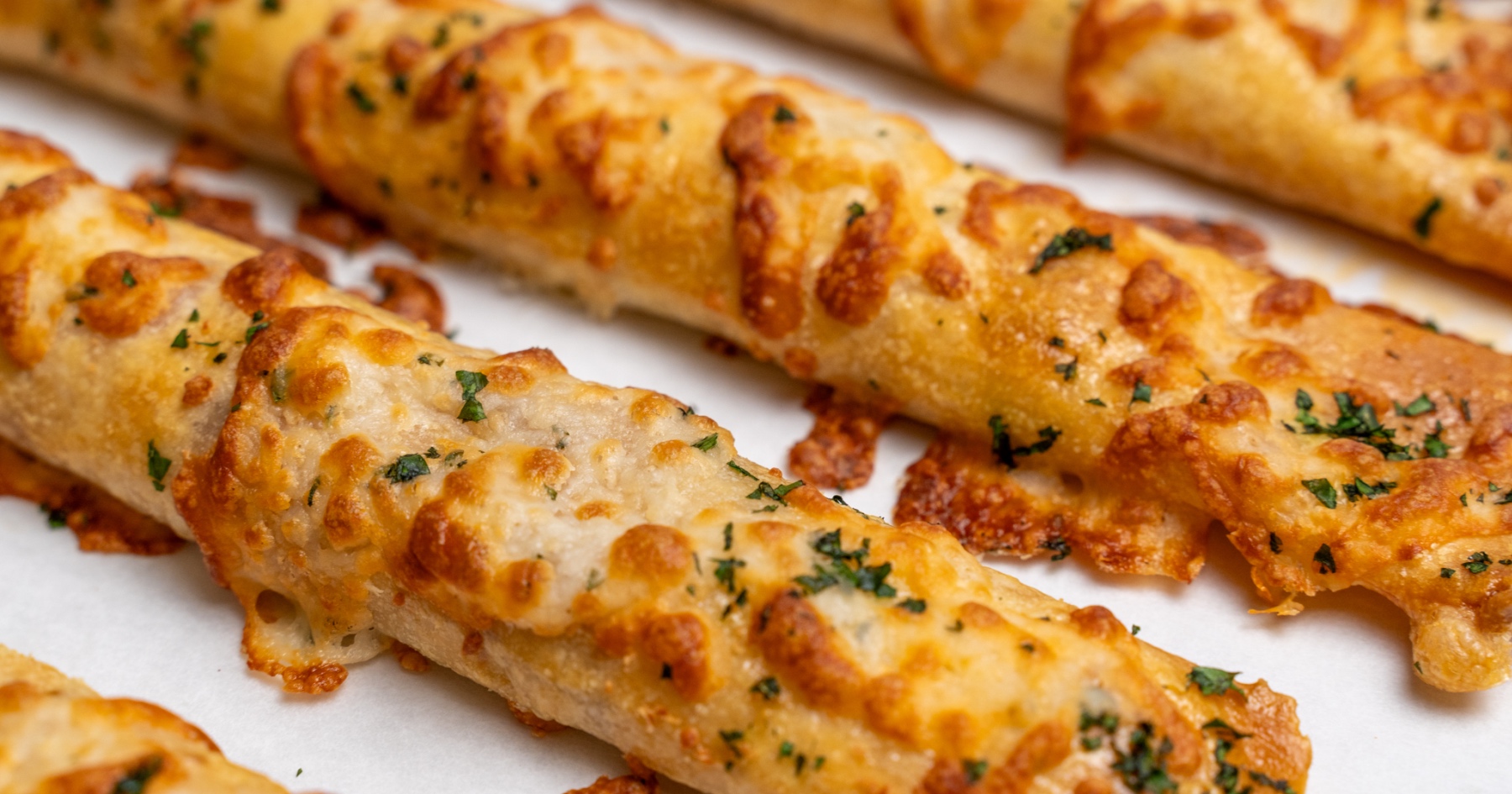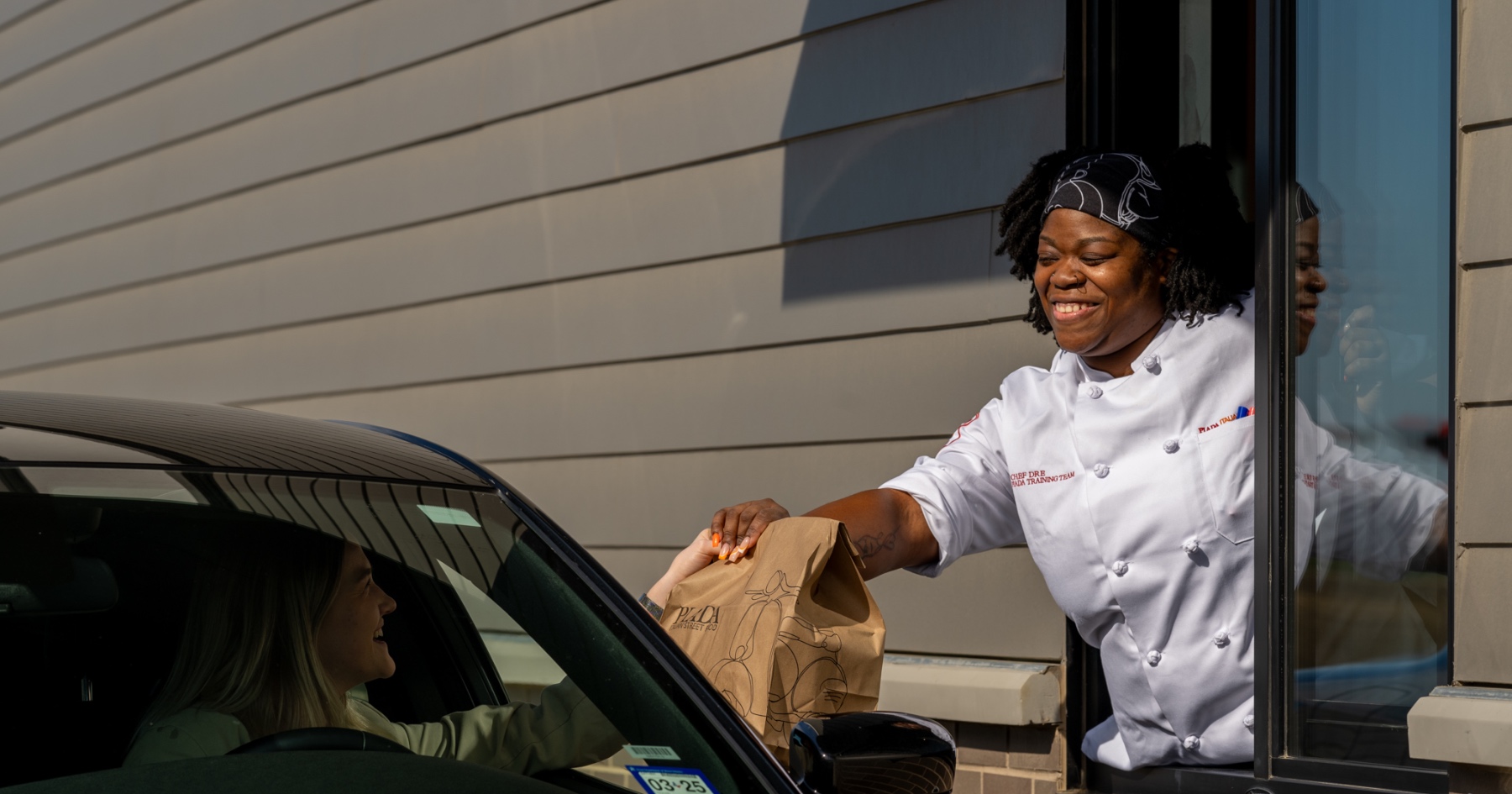
The 58-unit Piada is scheduled to add another eight locations in 2025. | Photo courtesy of Piada.
Piada Italian Street Food is looking for additional capital to accelerate growth.
The Columbus, Ohio-based fast-casual Italian concept has been chugging along with steady expansion since the pandemic. With 58 units in seven states, all company owned, the chain expects to add another eight this year, moving into Florida for the first time and then hopefully Virginia next year.
But Matt Harding, Piada’s chief concept officer, would like to accelerate that growth pace, hoping to get up to 18 open next year to widen the chain’s size advantage within the rarified niche it operates in.
If you don’t count Fazoli’s, which is a different animal, or fast-casual pizza, Piada is one of the only fast-casual Italian concepts with national potential. It competes with players like Chipotle or Sweetgreen, but with a focus on the flavors of Italy.
The concept was founded in 2010 by Chris Doody, who also co-founded the Bravo Cucina and Brio Tuscan Grille concepts, which became the Bravo Brio Restaurant Group. Doody sold that company in 2006.
Piada won private-equity funding early on from L Catterton, which continues to hold a minority stake.
The concept’s namesake piada is a flatbread sandwich of sorts, inspired by a common Italian street food, that looks like a burrito in photos and is often described as a wrap. Ingredients like pancetta, crispy chicken, bruschetta, creamy parmesan and basil aioli are wrapped with the thin flatbread dough. There are bowls and salads, all of which are fully customizable.
A top seller is pasta, tossed with sauces like Carbonara, Diavola, Pesto or Marinara. Proteins like salmon, Italian sausage, meatballs, grilled steak or calamari can be added.

Piada sticks are like “inverted pizza,” as a popular side item. | Photo courtesy of Piada.
And then there are the Piada Sticks, which Harding describes as “like an inverted pizza” rolled cigar-like and served with a creamy parmesan dipping sauce. Piada offers a subscription—or “stickscription”—program. For an annual fee of $25, guests can get a free stick (typically priced at $3.49) and drink (about $3) with the order of any entrée.
Harding said the subscription program has roughly 2,000 signed up. It appeals to college students who are looking for a deal, he said, and the brand is thinking about adding another Piada Pocket item, coming soon as a limited-time offer, as a potential additional subscription offering next year.
At a time when guests are seeking value, Piada’s sales have been strong, he said, with consistent same-store sales growth and an average unit volume of about $2.5 million. In fiscal 2023, sales were up nearly 16% to $67.3 million, with what was then 55 units, according to Restaurant Business sister brand Ignite Technomic.
Harding said Piada enjoys about a 50-50 ratio of traffic between lunch and dinner, which is a bit of an advantage over competitors in fast-casual, who are struggling to attract more diners at dinner.
“We’re really geared for individuals at night,” he said. “If you have a dinner daypart, as a fast-casual, it’s a very healthy business.”

About 20% of Piada locations have drive-thru pick-up windows. | Photo courtesy of Piada.
But competitors keep emerging, though Harding says they are mostly “onesies and twosies” so far. He points to the two-unit Pasta Sisters in Los Angeles, for example, with a fast-casual choose-your-pasta-and-sauce menu; or the six-unit Dué Cucina out of Seattle, which recently opened a unit in Texas.
“We’ve got people coming in to chase share of the fast-casual Italian market,” said Harding. “Putting distance between you and your competitor is important.”
Lisa Jennings is a veteran restaurant industry reporter and editor who covers the fast-casual sector, independent restaurants and emerging chain concepts.
View All Articles by This Author


Dining and Cooking